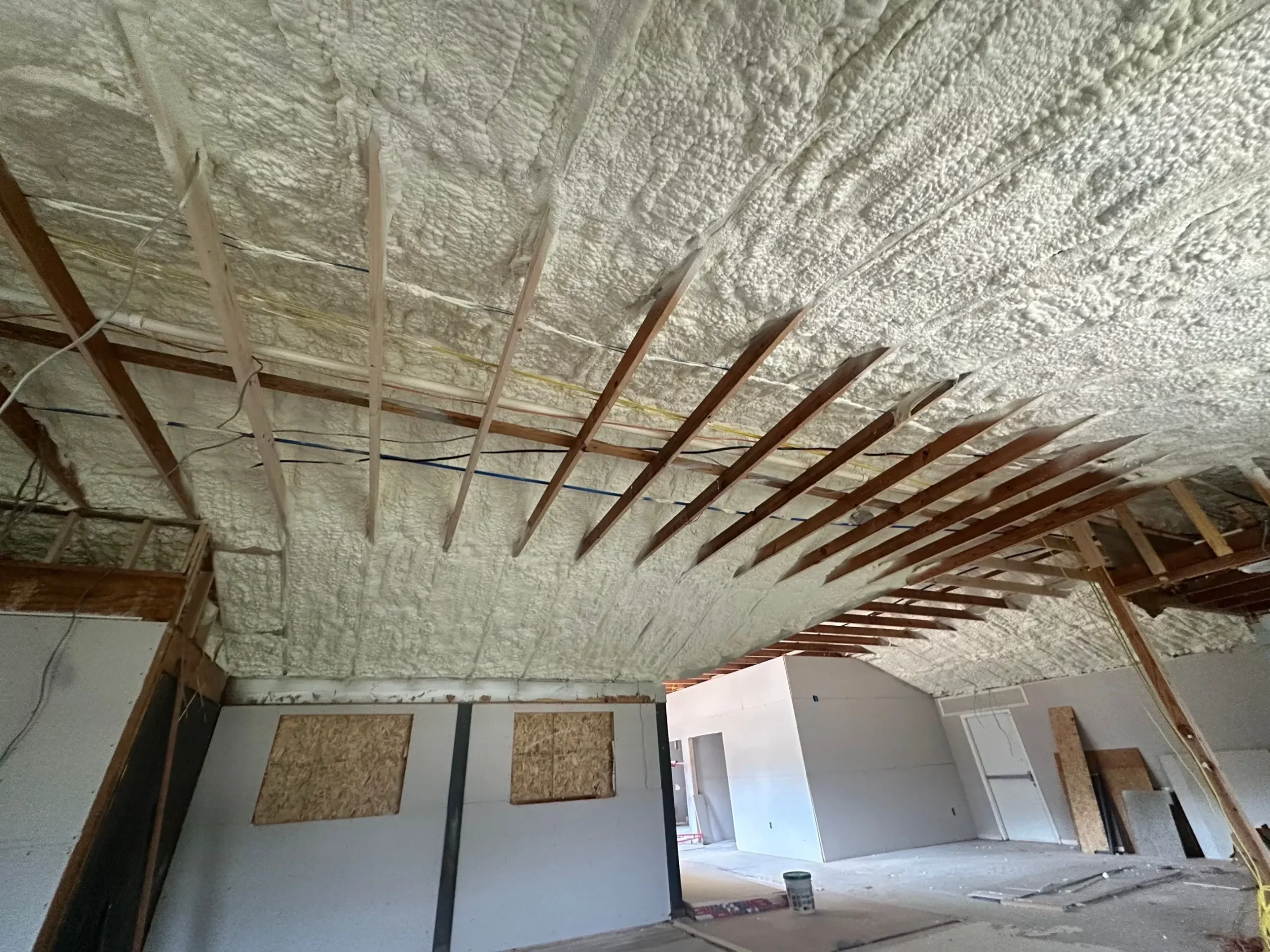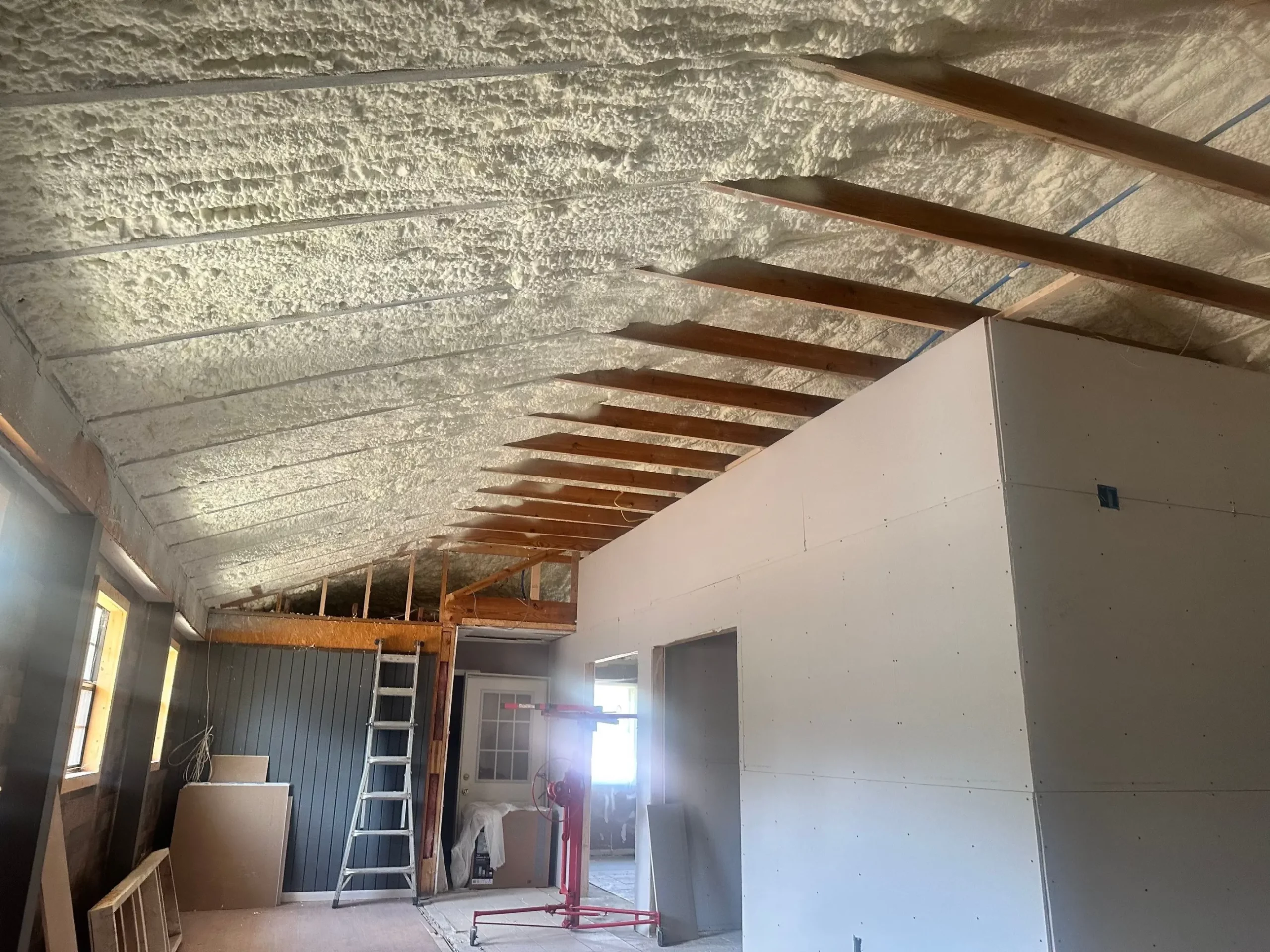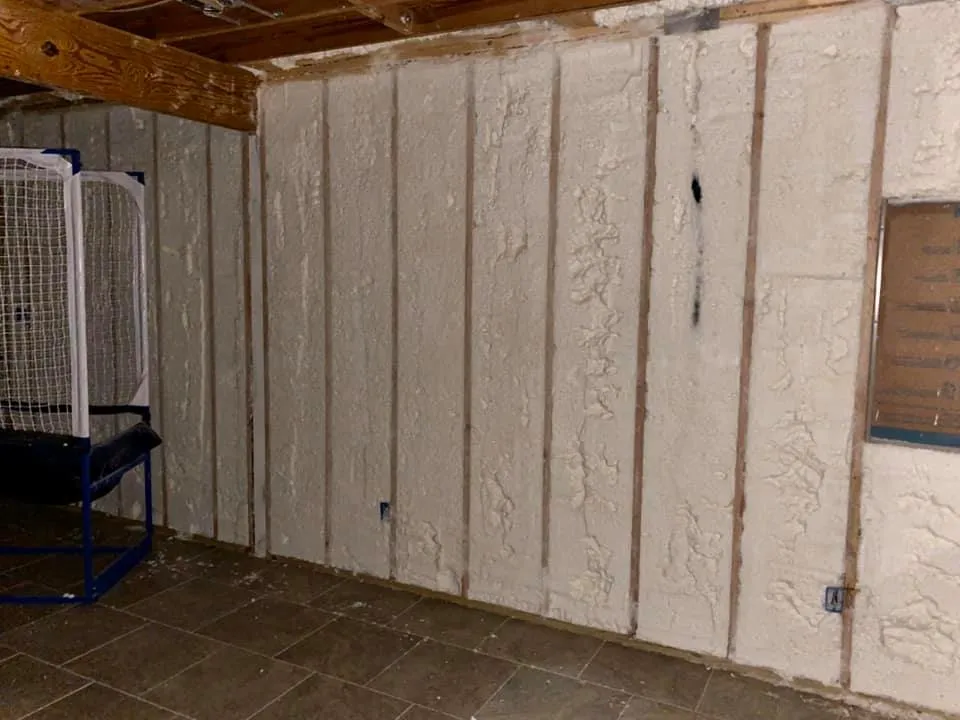Open-cell spray foam insulation requires minimal active maintenance throughout its lifespan, primarily consisting of periodic visual inspections and moisture monitoring. The porous structure of open-cell foam makes it naturally self-regulating for moisture management, but homeowners should inspect for physical damage, pest intrusion, and air seal integrity every 6-12 months to maintain optimal performance.
Unlike traditional insulation materials that may settle, compress, or degrade significantly over time, open-cell spray foam maintains its insulating properties for decades with proper installation and basic oversight. Based on extensive field experience across residential and commercial applications, most maintenance issues arise from external factors rather than inherent material deterioration, making preventive monitoring the most effective approach.
Understanding Open-Cell Foam Maintenance Requirements
Open-cell spray foam’s maintenance needs differ substantially from other insulation types due to its unique cellular structure and application method. The material expands into cavities and creates an air barrier while remaining breathable, which affects how it interacts with building systems over time.
Professional Tip: Schedule inspections during seasonal transitions when temperature and humidity changes are most likely to reveal potential issues with the foam or surrounding building envelope.
| Maintenance Activity | Frequency | Typical Duration | Tools Required |
|---|---|---|---|
| Visual inspection | Every 6 months | 30-45 minutes | Flashlight, moisture meter |
| Moisture level check | Annually | 15-20 minutes | Digital moisture meter |
| Air seal testing | Every 2-3 years | 1-2 hours | Thermal imaging camera (optional) |
| Professional assessment | Every 5 years | 2-3 hours | Professional equipment |
The breathable nature of open-cell foam allows moisture vapor transmission, which prevents trapped moisture issues but requires monitoring to ensure proper building envelope function. Unlike closed-cell alternatives, open-cell foam works with building moisture dynamics rather than creating an impermeable barrier.
Key Inspection Areas and Warning Signs
Regular inspections should focus on specific areas where issues commonly develop. These zones typically experience the most stress from building movement, moisture exposure, or mechanical systems interaction.
Examine foam surfaces for discoloration, which may indicate moisture infiltration or contamination. Brown or black staining often suggests water intrusion from roof leaks or plumbing issues, while white or gray discoloration might indicate mold growth in persistently humid conditions.
Check for physical damage including tears, gaps, or compressed areas. Building settlement, vibration from HVAC systems, or accidental contact during maintenance activities can create openings that compromise thermal performance and air sealing effectiveness.
Professional Tip: Use a moisture meter to test areas showing discoloration before assuming mold growth, as some staining results from normal moisture cycling without harmful microbial activity.
| Warning Sign | Potential Cause | Immediate Action Required |
|---|---|---|
| Brown/black staining | Water intrusion | Locate and repair moisture source |
| Musty odors | Mold growth | Increase ventilation, professional assessment |
| Visible gaps or tears | Physical damage | Seal small gaps, professional repair for large areas |
| Compressed foam areas | Mechanical damage | Evaluate cause, consider foam replacement |
| Pest evidence | Rodent/insect intrusion | Seal entry points, pest control if needed |
Moisture Management and Ventilation Considerations
Open-cell foam’s breathable characteristics require proper ventilation system coordination to maintain indoor air quality and prevent moisture accumulation. The material allows water vapor to pass through while blocking air movement, creating unique moisture dynamics in building assemblies.
Monitor relative humidity levels in spaces with open-cell foam insulation, maintaining indoor humidity between 30-50% to optimize comfort and prevent condensation issues. Excessive humidity can overwhelm the foam’s moisture-handling capacity, particularly in poorly ventilated areas.
Ensure mechanical ventilation systems operate effectively, as open-cell foam creates tighter building envelopes that reduce natural air exchange. Balanced ventilation becomes more critical when air leakage is minimized through spray foam application.
| Humidity Level | Foam Performance | Action Needed |
|---|---|---|
| Below 30% | Optimal, no moisture stress | Monitor seasonally |
| 30-50% | Normal operating range | Maintain current ventilation |
| 50-60% | Elevated, monitor closely | Increase ventilation capacity |
| Above 60% | Risk of condensation issues | Professional HVAC assessment |
Long-Term Performance Factors
Open-cell spray foam maintains its insulating and air sealing properties for 20-30 years under normal conditions, with performance degradation occurring gradually rather than suddenly. Environmental factors, building use patterns, and initial installation quality significantly influence long-term performance.
Temperature cycling causes minimal stress on properly installed open-cell foam compared to mechanical insulation systems. The material’s flexibility allows accommodation of normal building movement without cracking or separating from substrates.
Chemical exposure from cleaning products, pest control treatments, or industrial processes can affect foam integrity over time. Avoid direct contact between harsh chemicals and foam surfaces during maintenance activities.
Professional Tip: Document foam condition with photos during initial inspections to establish baseline conditions for comparison during future assessments.
Things to Consider Before Making Maintenance Decisions
Evaluate the specific environmental conditions in your building before establishing maintenance schedules. High-humidity climates, coastal locations, or areas with extreme temperature variations may require more frequent monitoring than moderate environments.
Consider the age and condition of other building envelope components when assessing foam maintenance needs. Roof leaks, foundation moisture issues, or failing windows can create conditions that stress insulation systems beyond their design parameters.
Account for building use changes that might affect insulation performance requirements. Converting attic spaces to living areas, adding moisture-generating equipment, or modifying ventilation systems can alter the demands placed on spray foam insulation.

Professional Services Stellrr Provides
- Open Cell Insulation Installation: Complete installation services for residential and commercial applications, ensuring proper coverage and air sealing performance that minimizes future maintenance requirements.
- Insulation Removal and Replacement: Safe removal of damaged or underperforming insulation materials and installation of new open-cell spray foam systems designed for long-term reliability.
- Commercial Spray Foam Solutions – Specialized application techniques for commercial buildings requiring minimal ongoing maintenance while meeting demanding performance standards.
- Attic Insulation Services – Comprehensive attic insulation systems that integrate open-cell foam with proper ventilation design to optimize long-term performance and reduce maintenance needs.
Common Questions About Ongoing Care
Can open-cell spray foam be repaired if damaged?
Small tears or gaps in open-cell spray foam can often be repaired using compatible foam products applied directly to damaged areas. Larger damage areas typically require professional assessment to determine whether partial or complete replacement provides better long-term performance. The repair process involves cleaning damaged surfaces, applying primer if needed, and carefully matching foam density to existing material.
How do I know if moisture levels are affecting my foam insulation?
Monitor for condensation on windows, musty odors, or visible mold growth in spaces with open-cell foam insulation. Use a digital moisture meter to test foam surfaces and surrounding materials during seasonal humidity changes. Consistently elevated readings above 20% moisture content in foam areas warrant professional investigation of ventilation adequacy and moisture sources.
What happens if I find pest damage in spray foam areas?
Address pest intrusion immediately by sealing entry points and removing contaminated foam material if necessary. Small rodent tunnels can often be filled with compatible foam products, while extensive damage may require professional replacement. Focus on eliminating pest access routes rather than just treating foam damage to prevent recurring issues.
Understanding Maintenance Costs and Scheduling
Regular maintenance activities for open-cell spray foam involve primarily time and basic tools rather than expensive materials or professional services. Most homeowners can perform visual inspections and basic moisture monitoring using readily available equipment.
Professional assessments provide value when building performance issues develop or during major renovation projects. These evaluations can identify problems before they become costly repairs while confirming insulation system effectiveness.
| Maintenance Type | DIY Capability | Professional Recommended | Frequency |
|---|---|---|---|
| Visual inspection | High | Optional | Every 6 months |
| Moisture monitoring | Moderate | First time only | Annually |
| Damage assessment | Low | Recommended | As needed |
| Performance testing | None | Required | Every 5 years |
Schedule maintenance activities during mild weather periods when accessing insulated spaces is most comfortable and accurate readings are easier to obtain. Spring and fall inspections align well with other seasonal building maintenance activities.
Taking Action on Maintenance Findings
Document all maintenance observations using photos and written notes to track changes over time. This documentation helps identify developing patterns that might indicate building envelope issues beyond just insulation performance.
Address moisture-related findings promptly, as delayed action can lead to more extensive problems affecting not just insulation but structural building components. Most moisture issues result from sources outside the insulation system itself.
Contact professional services when findings exceed normal homeowner capability or when patterns suggest systematic building performance issues. Early professional intervention typically costs less than addressing problems after they become severe.
Get Professional Support for Your Insulation Needs
Maintaining open-cell spray foam insulation effectively requires understanding its unique characteristics and knowing when professional assistance provides the best value. Stellrr combines extensive field experience with technical expertise to help property owners maximize their insulation investment through proper maintenance approaches.
For guidance on establishing maintenance schedules appropriate for your specific building conditions or professional assessment of existing foam insulation systems, contact Stellrr at info@stellrr.com or call (512) 710-2839. Professional evaluation can identify potential issues before they affect comfort or energy efficiency while confirming that your maintenance approach matches your building’s specific needs.
Essential Maintenance Questions Answered
How long does open-cell spray foam typically last before requiring replacement?
Properly installed open-cell spray foam maintains effectiveness for 20-30 years under normal building conditions. Performance degrades gradually rather than suddenly, with most issues arising from external factors like moisture intrusion or physical damage rather than inherent material failure. Regular maintenance extends service life by addressing problems before they become severe.
What tools do I need for basic spray foam maintenance?
Essential tools include a high-quality flashlight or headlamp, digital moisture meter, measuring tape, and camera for documentation. Optional equipment like thermal imaging devices can help identify air leakage issues but aren’t necessary for basic maintenance. Most maintenance activities require more time and attention than specialized equipment.
Should I hire professionals for routine spray foam inspections?
Homeowners can perform most routine maintenance activities effectively with basic tools and knowledge. Professional inspections become valuable when problems are discovered, building performance issues develop, or during major renovations. Consider professional assessment every 5 years to confirm long-term performance and identify potential issues early.
Can I add more spray foam over existing applications if needed?
Additional spray foam can be applied over existing open-cell installations in most situations, provided the existing foam remains in good condition. Surface preparation and compatibility testing ensure proper adhesion between old and new materials. Professional application typically provides better results for significant additions or repairs.
What environmental factors most affect open-cell foam maintenance needs?
High humidity environments, extreme temperature cycling, and exposure to chemicals or contaminants increase maintenance requirements. Coastal locations, industrial areas, or buildings with poor ventilation may need more frequent monitoring. Most environmental stresses affect building envelopes generally rather than just insulation systems specifically.





